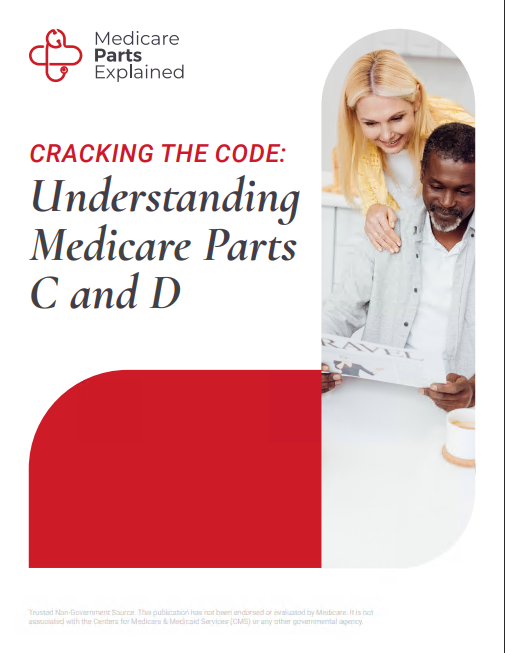Key Takeaways
- Medigap offers broader doctor and hospital choices, while Medicare Advantage includes extra benefits like vision and dental.
- Consider your healthcare needs and financial situation when choosing between Medigap and Medicare Advantage.
Wondering About the Differences Between Medicare Advantage and Medigap? Here’s a Handy Guide
Navigating the world of Medicare can be confusing, especially when deciding between Medicare Advantage and Medigap. This guide will help clarify the differences, benefits, and drawbacks of each option to aid in making an informed decision.
Why Medicare Advantage Might Be a Good Fit for You
Medicare Advantage plans, also known as Part C, bundle together Medicare Part A (hospital insurance) and Part B (medical insurance), often including Part D (prescription drug coverage) as well. These plans are offered by private insurance companies approved by Medicare and typically provide additional benefits such as dental, vision, and hearing coverage.
One of the major advantages of Medicare Advantage is its cost structure. Although you may have to stay within a network of providers, the plan often comes with lower out-of-pocket costs and caps on annual spending. This cap can protect you from unexpected medical expenses, making it easier to manage your healthcare budget. If you prefer having all your healthcare needs managed under one plan and appreciate additional perks like gym memberships or wellness programs, Medicare Advantage could be a suitable choice.
Medicare Advantage plans also provide coordinated care. This means that your healthcare providers work together to give you the most efficient care possible. This can be particularly beneficial if you have multiple health conditions requiring regular monitoring. Additionally, some Medicare Advantage plans offer programs for chronic disease management, which can be a significant advantage for those needing continuous medical care.
How Medigap Supplements Your Medicare Coverage
Medigap, or Medicare Supplement Insurance, is designed to fill the coverage gaps left by Original Medicare (Part A and Part B). This includes costs such as copayments, coinsurance, and deductibles. Medigap policies are standardized and offered by private companies, ensuring a consistent set of benefits regardless of the provider.
One significant benefit of Medigap is the flexibility it offers in choosing healthcare providers. You can visit any doctor or hospital that accepts Medicare, which is particularly advantageous if you have a preferred physician or travel frequently. While Medigap plans generally have higher premiums, they can lower out-of-pocket costs significantly, making them ideal for those who require extensive medical care. This flexibility can be crucial if you need specialized care that may not be available within a Medicare Advantage network.
Another advantage of Medigap is the predictability of costs. With Medigap, you can avoid many out-of-pocket expenses that can add up quickly with Original Medicare. For example, Medigap plans often cover the full cost of Part B coinsurance, which can be a significant expense for those who require frequent outpatient care or have ongoing medical needs.
Comparing Costs: Medigap vs. Medicare Advantage
When comparing costs, Medicare Advantage plans usually have lower monthly premiums but may include additional costs for services within their network. Conversely, Medigap plans have higher premiums but fewer out-of-pocket expenses, as they cover most of the costs not paid by Original Medicare.
For those who anticipate frequent medical visits or high healthcare costs, Medigap might be more cost-effective in the long run. Medicare Advantage, on the other hand, could be more affordable for individuals with fewer healthcare needs and a preference for additional services bundled into one plan. It’s essential to consider not only the monthly premium but also the potential out-of-pocket costs you might incur throughout the year.
When evaluating the total cost of coverage, it’s also important to consider the benefits included in each plan. Medicare Advantage plans often provide additional benefits, such as dental, vision, and hearing coverage, which can save you money on these services. However, if you need extensive medical care, the lower out-of-pocket costs and comprehensive coverage provided by Medigap might be more beneficial.
Which Plan Offers Better Doctor Flexibility?
Medigap provides unparalleled flexibility in choosing healthcare providers. You are free to see any doctor or specialist who accepts Medicare, without worrying about network restrictions. This can be particularly important if you have long-standing relationships with specific healthcare providers or if you live in multiple states throughout the year.
Medicare Advantage plans, however, often require you to use a network of doctors and hospitals. While this might limit your choices, many plans offer extensive networks that can still meet your needs. Additionally, some Medicare Advantage plans allow for out-of-network care at a higher cost. If maintaining the freedom to choose your healthcare providers is a priority for you, Medigap might be the better option.
However, Medicare Advantage plans can offer the advantage of integrated care, where your healthcare providers work together within the network to manage your care. This can lead to better coordination of services and improved health outcomes, especially if you have multiple health conditions.
Traveling with Medicare: What You Need to Know
Travel can significantly impact your healthcare needs. Medigap is beneficial for frequent travelers as it provides nationwide coverage. If you receive care outside the U.S., some Medigap plans even offer limited coverage for emergency services abroad.
Medicare Advantage plans generally cover you within their specific service areas, and while emergency care is covered outside these areas, routine care might not be. This could be a critical consideration if you spend significant time traveling or living in different regions. If you have a second home or frequently travel, Medigap’s flexibility can ensure you have access to care wherever you are.
Additionally, Medigap’s coverage for emergency medical care abroad can provide peace of mind if you travel internationally. While this coverage is typically limited, it can be a valuable benefit for those who spend a lot of time outside the U.S.
Prescription Drug Coverage Differences Explained
Most Medicare Advantage plans include prescription drug coverage, simplifying your healthcare management under one plan. This can be convenient if you require regular medications. The inclusion of prescription drug coverage can save you from having to manage multiple plans and premiums.
Medigap plans do not cover prescription drugs. If you choose Medigap, you will need to enroll in a separate Medicare Part D plan to get prescription drug coverage. This separation can add another layer of decision-making and cost but allows for more tailored coverage. You can choose a Part D plan that best fits your medication needs, ensuring you have the most appropriate coverage for your prescriptions.
When considering prescription drug coverage, it’s important to look at the formulary, or list of covered drugs, for each plan. Medicare Advantage plans often have formularies that include a wide range of medications, but you should check to make sure your specific prescriptions are covered. With Part D plans, you can select one that best matches your medication needs.
Understanding the Enrollment Periods for Both Plans
Enrollment periods for Medicare Advantage and Medigap differ. For Medicare Advantage, you can enroll during the initial enrollment period when you first become eligible for Medicare, during the annual open enrollment period from October 15 to December 7, or during a special enrollment period if you qualify.
Medigap has an open enrollment period that begins the first month you are 65 or older and enrolled in Part B. This period lasts six months and guarantees you can buy any Medigap policy sold in your state, regardless of health conditions. Outside of this period, your ability to buy a Medigap policy may be restricted, and costs could be higher.
Understanding these enrollment periods is crucial to ensuring you have the coverage you need when you need it. Missing an enrollment period can result in higher costs or limited options. If you’re planning a transition between plans, it’s essential to time it correctly to avoid any gaps in coverage.
Making the Right Choice for Your Health Needs
Deciding between Medicare Advantage and Medigap requires careful consideration of your health needs, financial situation, and personal preferences. If you value comprehensive coverage, flexibility in choosing healthcare providers, and travel frequently, Medigap might be the better option. On the other hand, if you prefer an all-in-one plan with additional benefits and potentially lower premiums, Medicare Advantage could be more suitable.
Assess your healthcare usage, budget, and the importance of provider flexibility to make an informed decision. Consulting with a licensed insurance agent can also provide personalized guidance based on your specific circumstances. They can help you understand the details of each plan and how they fit with your health needs and financial situation.
Finding the Right Plan for Your Needs
Ultimately, the best plan for you depends on your individual healthcare needs and financial situation. Consider the following when making your decision:
- Healthcare Needs: Evaluate how often you visit doctors, specialists, and hospitals, and whether you have any chronic conditions requiring frequent care. Understanding your healthcare usage can help you determine which plan will provide the most value.
- Financial Situation: Assess your budget for monthly premiums versus out-of-pocket costs. While Medigap may have higher premiums, it could save you money on healthcare expenses in the long run, especially if you have significant medical needs.
- Provider Preferences: Determine if you have preferred doctors or hospitals and whether they are included in Medicare Advantage networks. If maintaining access to specific providers is important to you, Medigap’s flexibility might be the better choice.
- Travel: Consider how often you travel and whether you need coverage outside your home state or the country. If you travel frequently, Medigap’s nationwide coverage can ensure you have access to care wherever you go.
Wrapping Up
Choosing between Medicare Advantage and Medigap is a personal decision that depends on various factors. By understanding the key differences, costs, and coverage options, you can make a well-informed choice that best suits your healthcare needs and lifestyle.
Both Medicare Advantage and Medigap have their advantages and disadvantages, so it’s important to carefully evaluate your healthcare needs and financial situation. Whether you prioritize lower out-of-pocket costs, provider flexibility, or additional benefits, there’s a plan that can meet your needs.
Contact Information:
Email: [email protected]
Phone: 4705559012











